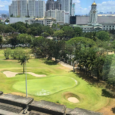The Philippines is considered one of the most disaster-prone countries in the world, but this doesn’t mean that we cannot do anything about it. By planning and preparing, we can boost our chances of survival.
Who can lead us in building a culture of preparedness? The good news is, everyone can be an ambassador of emergency and disaster preparedness, even you, the young ones. Millennials are especially well-equipped, because of your strong sense of community, knack for finding useful information, creative use of new technologies, and natural instinct to be always connected.
Here are five ways millennials can take the lead in making sure your homes, schools, and communities are more prepared for disasters.
Monitoring and reporting through social media. Government agencies, disaster response units and various media outfits broadcast useful and accurate information and bulletins through their social media channels and you can help monitor and relay these to your family and community leaders. Social media is also an effective tool for you to send situation reports on the scene, and by using unified hashtags, these reports can be useful to those managing response efforts.
Using mobile apps and solutions. You can take the lead in ensuring useful apps are installed in the devices of your family and friends, and teaching them how to use these apps. One example is the Batingaw app [Download Here] which converts a smartphone into a disaster survival tool. You can also encourage them to download other essentials like rainfall and typhoon monitoring apps and emergency tutorial apps (ex. first aid, fire management).
One more important thing is ensuring that all the phones on their loved-ones are enabled to receive disaster alerts via the emergency cell broadcast system. Check this link to read activation steps.
Assembling the family’s survival kit. How about shopping or collecting for a good cause? There are many resources online that can teach you how to assemble a disaster survival kit using items readily available at home or easily found in stores. Putting together a Go-bag for example can be made more fun and interesting by turning it into a family bonding activity. Check this basic Go-Bag tutorial.
Discussing and designing the family’s Emergency Plan. As one family, have you discussed a meeting place for example, in case an earthquake happens at a time when all of you are in separate places? Have you ever planned your evacuation plan in case of fire, or flood. It’s time to have a serious talk with your family, and for your plan to be easily remembered, you can help design your survival guides that can be consulted by everyone in the family for quick reference.
Spreading the word in the community. Safety is everyone’s responsibility but it also pays to help everyone in the community. After researching basic survival skills and preparedness tips (and there are a lot of these online – start with the official sites of PAGASA, PHIVOLCS and NDRRMC), why not create a program with your classmates or friends to help spread the word in your own community? You can create social media posts, posters and flyers or even stage a show that will help get your message across. The more creative and memorable, the better.
The youth really plays a key role in building a more prepared and resilient community, that’s why Smart Communications through it’s TNT brand launched the #TropangReady disaster preparedness caravan. This program aims to empower and enable students to take more proactive steps in strengthening disaster preparedness at school, in their own homes and communities. Watch this video to know more about the program:




